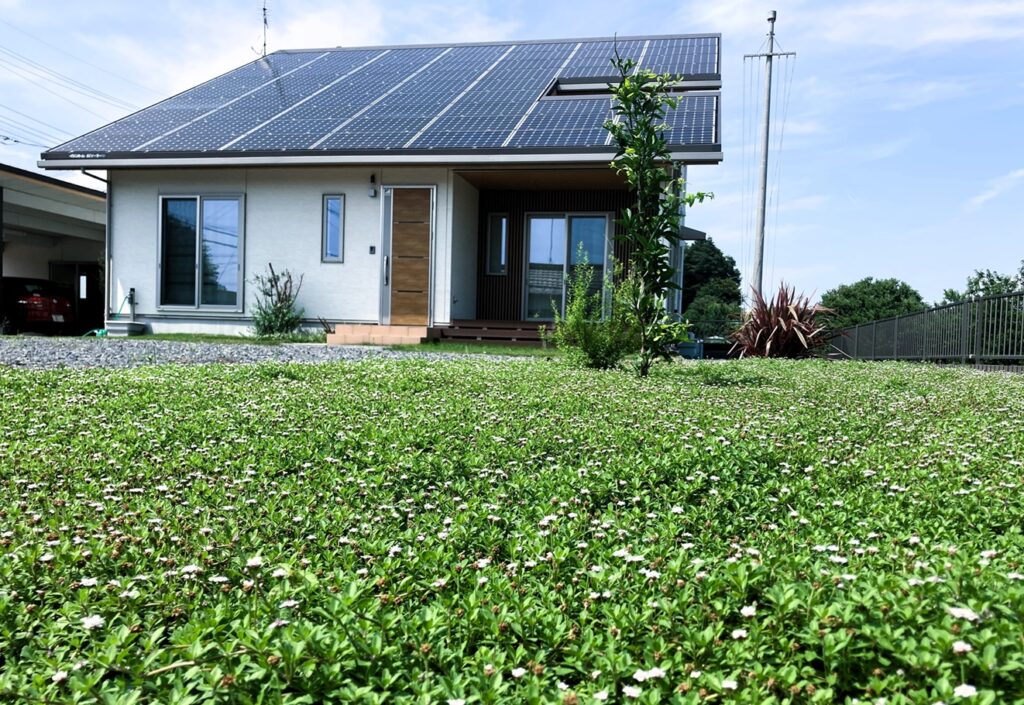
Growing Strong Roots: The Key to a Healthy Kurapia Lawn
Whether you’re a seasoned horticulturist or trying groundcover for the first time, establishing a healthy Kurapia lawn starts with one critical step: growing strong roots. By understanding how Kurapia develops and what it needs early on, you can ensure long-term success with this hardy, drought-tolerant groundcover.
Why Roots Matter
Although Kurapia begins as a small plug, each one rapidly sends a taproot deep into the soil, much like an oak tree growing from an acorn. This taproot anchors the plant, sets a stable foundation, and prepares it for drought resistance and vigorous growth above the soil.
Unlike many traditional groundcovers that spread underground via rhizomes (which can be aggressive and hard to control), Kurapia spreads across the surface. Its stems crawl outward, rooting wherever they touch soil and creating new plants as they go. This makes Kurapia both effective at coverage and easy to manage—you can control its spread simply by edging the borders.
Kurapia Is Never Sold in Mud Flats – Beware of Fakes
Kurapia is never grown or sold in “mud flats”—those oversized trays packed with dozens of tiny break-apart seedlings. If you see Kurapia being sold this way, it’s not authentic and is being sold illegally. Fake products labeled as Kurapia will not perform the same, and using them may lead to failure in your landscape.
All genuine Kurapia plugs are grown in individual soil-and-fabric pods designed to direct roots straight down into the soil. This unique system minimizes transplant shock and maximizes early growth potential. Mud flats, by contrast, require you to rip apart plant clusters, often damaging their roots. You might only end up with 8–10 viable plants from a whole tray—compared to 100% viable plugs in a proper Kurapia flat.
How to Plant for Root Success
When planting, make sure each Kurapia plug is set slightly below the surface of the surrounding soil. The full soil plug should be buried so it’s surrounded by moist earth. This ensures the plug doesn’t dry out (they dry faster than normal soil) and allows the stems to contact the soil—where they will quickly begin forming new roots and shoots.
This early stem-to-soil contact is critical. It kickstarts Kurapia’s spreading process, setting you up for a thick, green carpet.
Choosing the Right Mulch
After planting, apply a thin layer of finely shredded, well-rotted mulch to help retain surface moisture and protect young roots. We recommend seed-starting mulch, which is composted and designed specifically for delicate, developing plants.
Avoid the following types of mulch:
- Raw manure or incompletely composted material often contains excess nitrogen, which can burn young plants. These mixes typically smell strongly of ammonia or manure.
- Uncomposted wood fiber (like sawdust or raw bark) robs nitrogen from the soil as it breaks down, depriving young Kurapia of a vital nutrient during its early growth phase.
Good mulch should be dark, slightly moist, crumbly, and have a mild, earthy scent. It should never smell sharp, sour, or like barn waste.
Watering Schedule for Root Development
Proper watering during the first few weeks is essential for healthy root growth—but it’s not about soaking the soil constantly. Here’s the correct way to do it:
- Week 1: Water daily, but only enough to keep the top layer of soil moist. This ensures the plugs don’t dry out while they’re adjusting to their new home.
- Weeks 2–3: Water less frequently, but more deeply—around every other day. The goal here is to push water deeper into the soil, encouraging the roots to grow down and follow the moisture.
- Weeks 4+: Water every 3–4 days (or as needed depending on your climate and soil). Continue with deep soaks to strengthen and anchor the root system.
You’ll know your Kurapia is taking root when you see new leaves forming and the stems lie flush against the soil with firm growth. Always observe your soil conditions—adjust based on how fast your soil dries, your irrigation system’s flow rate, slope, sun exposure, and weather.
Ordering in Bulk? Save More with Pallet Shipping
If you’re ordering more than 29 flats, ask us about pallet shipping—it can often be less expensive than our regular parcel shipping. Pallet deliveries do require someone to be present to sign for them at delivery, but they’re a great option for larger installations.
We also offer volume discounts for orders over 80 flats and 200 flats. For a custom quote or more info, email us anytime at info@kurapia.com.
Need More Support? We’re Here for You
Thousands of homeowners, landscape professionals, and municipalities have successfully established Kurapia lawns using these tips. We’re here to help you do the same.
Visit www.kurapia.com/support for planting guides, irrigation advice, and tailored instructions for different soil types and slopes. And after your purchase, our expert team is just an email away—ready to help you troubleshoot, plan, and grow with confidence.
Thank You!

